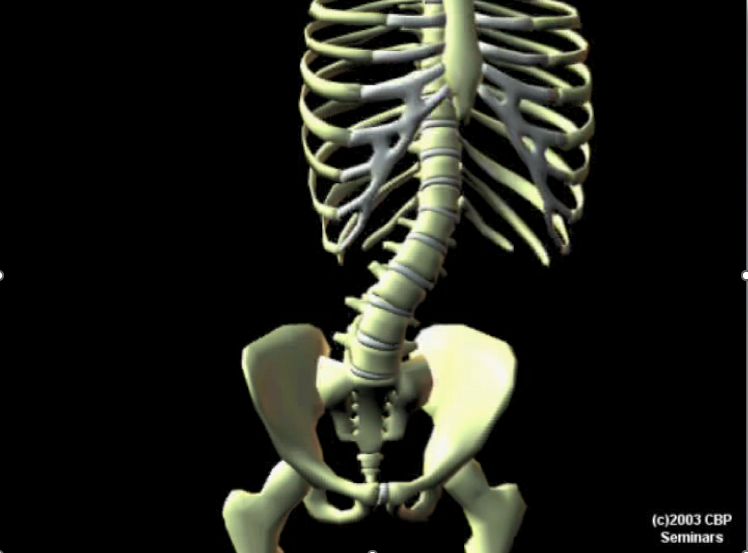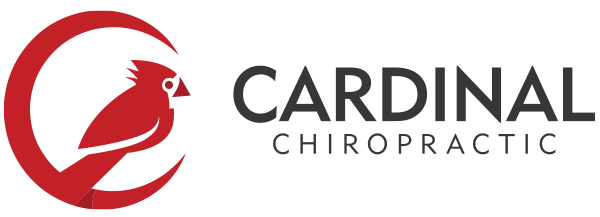A herniated disc (sometimes called a slipped disc or a ruptured disc) occurs when the soft and rubbery portion of the disc pushes through a crack in the outer shell of your disc. A herniated disc most often occurs in your lower back, although it can happen in your neck and upper back as well. Depending on the location and extent of the herniation, it can result in pain, numbness, or weakness in your arms or legs. Pain or discomfort associated with a herniated disc occurs only when the surrounding nerves are being affected. However, it’s also common that most patients don’t feel pain or discomfort at all. That’s because if the intrusion isn’t pushing on your nerves, there are no symptoms.
Cause(s) of a Herniated Disc
- Micro-trauma like repetitive, incorrect movements (poor lifting techniques) and poor posture are the more common causes of disc injury. Micro-traumas wear your disc down over time, creating weakness and susceptibility to injury. Many times people don’t realize this as the cause of their injury. The actual movement (bending over to pick something up from the ground) that caused the injury is just the catalyst – while the underlying damage was there all along.
- Macro-trauma like a direct impact or car crash can damage your disc to the extent that it fails immediately. However, if your disc has been susceptible to micro-trauma before the bigger traumatic event, you will be more likely to experience injury.
Abnormal Posture

 Abnormal posture is a major factor to disc injury. Abnormal postures put abnormal stresses and strain on your disc causing them to wear down and decay. This can make your disc highly susceptible to injury. One of the most common abnormal postures that lead to disc injury are lateral translations (right or left shifting) of the rib cage or head. Lateral translations put a shearing stress on your discs. Your discs are not made to handle this type of stress. Overtime, this abnormal load (and shear stress) can break down your disc and lead to injury.
Abnormal posture is a major factor to disc injury. Abnormal postures put abnormal stresses and strain on your disc causing them to wear down and decay. This can make your disc highly susceptible to injury. One of the most common abnormal postures that lead to disc injury are lateral translations (right or left shifting) of the rib cage or head. Lateral translations put a shearing stress on your discs. Your discs are not made to handle this type of stress. Overtime, this abnormal load (and shear stress) can break down your disc and lead to injury.
Loss of Spinal Curves
 Your spine should have 3 natural curves: cervical curve (lordosis), thoracic curve (kyphosis), and lumbar curve (lordosis). Loss of the curve, or even too much curve, will load your discs abnormally. Just as mentioned above with abnormal postures, these loads will weaken your disc overtime and eventually can lead to failure.
Your spine should have 3 natural curves: cervical curve (lordosis), thoracic curve (kyphosis), and lumbar curve (lordosis). Loss of the curve, or even too much curve, will load your discs abnormally. Just as mentioned above with abnormal postures, these loads will weaken your disc overtime and eventually can lead to failure.
 Retrolisthesis/Anterolisthesis
Retrolisthesis/Anterolisthesis
A retrolisthesis is a backwards slippage of an individual vertebra on another, whereas anterolisthesis is a forward slippage. Both of these misalignments can happen through trauma, degeneration, or as an anomaly. Regardless of the cause, it is an abnormal and un-healthy alignment of your vertebra. Because of this, there can be a large amount of stress on your disc, leading to injury and failure.
Stages of Injury
Typically, a disc herniation goes through 4 stages during the injury:
Disc Degeneration The first stage of injury is where your disc begin to degenerate or decay. This is usually a time-dependent process that happens over years. You can get accelerated aging of your discs by having unhealthy life-style habits like poor nutrition, poor hydration, and poor posture.
Prolapse During this stage, the shape and position of your disc start to change. Your disc will start to protrude, or bulge, which can press up against your spinal cord or nerves.
Extrusion During this stage, the nucleus pulposus protrudes through the wall of the annulus fibrosus. However, it is still contained within your disc.
Sequestration In the final stage, the nucleus pulposus bursts through the annulus fibrosus and may move to the outside of your disc. This is usually the most painful stage.
Home Care for Disc Injury
Some basic home care exercises can help reduce the pain and symptoms from a disc injury. These exercises can also be done to help prevent an injury from happening. Before starting any home care exercises it is important to first be evaluated by your chiropractor or primary care physician. Also any home care exercises should be avoided if there is an increase in pain or numbness and/or tingling.
- Supine Pigeon Pose
- Start with lying flat on your back with both knees bent. Gently cross one leg over the other, making a figure 4 with your legs. Gently lift the bottom leg towards your chest until you feel a slight stretch in glute/hip of the top leg. Hold for 30 seconds and repeat on opposite side.
- McKenzie Extension
- Start with lying flat on your stomach. Place your hands on the floor, palms down, at the side of your chest Gently push backwards with your arms only, raising your chest off the floor. Relax your back muscles as you raise up, then gently lower yourself down again. Repeat 10-15 times.
- Cat/Cow
- Start on your hands and knees (shoulder over wrists and knees over hips). Gently arch (extend) your back as you look up. Next round (flex) your back as you look down. Take your time as you go through each position. Repeat 10 times while focusing on inhaling as you extend and exhaling as you flex.
- Bird/Dog
- Start on your hands and knees (shoulder over wrists and knees over hips). Gently extend your right arm in front of you and you extend your left leg behind you. Hold for 1-3 seconds and slowly come back to all fours. Repeat on opposite side. Complete 10-12 rounds.
- Plank Pose
- Start on hands and knees (shoulder over wrists and knees over hips). Gently lift your knees and extend your legs (starting push-up position). Hold this position for 10 seconds. As you get stronger increase your time until you can hold for 1 minute or longer.
Chiropractic Care and Disc Injury
Getting the right chiropractic care can help with a disc injury. If your disc injury was caused from poor posture and/or poor spinal alignment, a corrective care chiropractor can help you to restore proper alignment to your spine and posture. Unlike regular chiropractic care that mainly focuses on immediate pain relief, Chiropractic BioPhysics goes one step further to also correct the source of the problem. A chiropractor trained in Chiropractic BioPhysics can get you back to feeling good and doing the things you love.
See a chiropractor to discuss treatment options if you have the following symptoms:
- Pain in the Legs and Foot – aside from low back pain, if the herniation is in your lower half of the spine, you’ll typically feel pain in your buttocks, thigh and calf.
- Shoulder and Arm Pain – if the herniated disc in your neck, you’ll typically feel the most pain in your shoulder and arm. This pain might shoot into your arm or leg when you cough, sneeze or move into certain positions.
- Numbness, Tingling and Weakness – in a lot of the cases, a disc herniation could lead to radiating numbness or tingling in your body part served by the affected nerves. Muscle weakness, tinglingly, numbness, and uneven grip can be signs of a herniation, even though pain may or may not be present.
Often times you may not know what caused your disc herniation. Many patients are surprised to find out they have poor posture and/or poor spinal alignment. Be sure to schedule an appointment with your CBP trained chiropractor if you think, or know, you have a disc injury.

